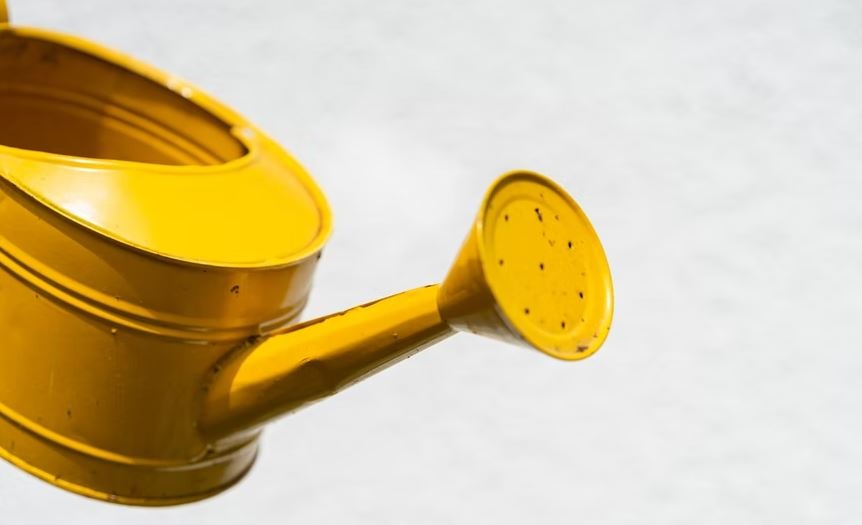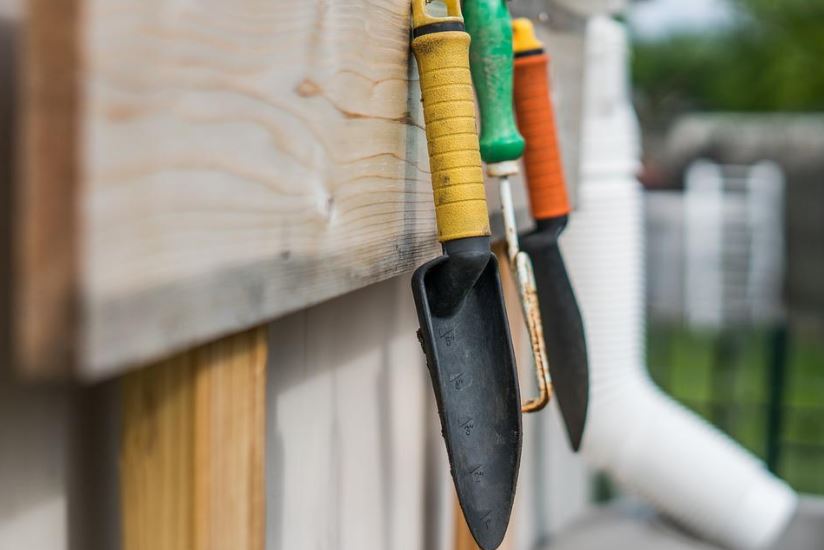No matter what types of plants you wish to grow and how many containers you wish to maintain, having the essential tools will make your task a hundredfold easier. The catch is visiting the hardware store or going online to purchase presents you with an endless list of options, making it overwhelming to pick which are the right ones you’ll need.
To help you out, we’ve listed the only tools you need for your container garden. These basic tools will help you plant and care for your garden, and grow the best crops you can.
1. Watering Can
One of the most essential gardening tools is a watering can. Plants need water to thrive. If you’re keeping your container garden on your balcony, windowsill, or rooftop, chances are it isn’t close to a hose. That’s why you need help to keep your vegetables, fruits, and herbs hydrated. A watering can make it easier to water your plants
What’s great is that the water coming out will resemble trickling rain. You can manage the amount of water you’re providing, rather than splashing water and making your plants vulnerable to underwatering or overwatering.
In general, a watering can with a 1 to 3-gallon capacity is enough and is easy to carry. Getting something smaller isn’t advisable. Otherwise, expect to take a lot of trips to the faucet. Opt for one with a long reach spout and good grip for easier watering chores.
2. Trowel
Another handy container gardening tool is the trowel. You’ll use it for transplanting seedlings, dividing tubers, digging holes, leveling soil, and loosening compacted soil. While others choose to use their bare hands for these purposes, a trowel is your best ally if you want to keep your hands free from dirt and work faster.
When buying this versatile tool, see to it that the scoop is made of heavy, durable metals like steel, carbon steel, or iron. Though an aluminum trowel is cheap, it may only last you a few seasons before it bends, causing you to spend for a new one and making it expensive in the long run.
Meanwhile, some trowels have markings that indicate depth. Such a feature can be an excellent help when digging holes for planting tubers like beets, carrots, and potatoes.
Then, choose one that’s comfortable to grip and one with a rubber coating so it won’t slip as you do your gardening tasks. Of course, a loop at the handle’s end is a bonus, so you can easily hang it after getting the job done.
3. Pruner
You’ll also need a pruner or garden shears for your container garden. This tool will help you prune plants, cut off dead foliage, small branches, and woody stems, and harvest your tomatoes, bell peppers, or eggplants from the main plant.
Most think that scissors are enough for the job. However, they aren’t as sharp and are prone to sticking and rust due to the wet saps that leave residue on the scissors. Scissors don’t also cut neatly, making plants vulnerable to infections. Pruners can cut through thick plant stems with ease and allow clean cuts to keep your container plants healthy.
If you’re buying a pruner, make sure that the blades are sharp, rust-proof, and won’t need regular sharpening. If you find ones with a protective cap and locking features, go for them as they’ll be excellent in preventing accidents or injuries.
4. Gardening Gloves
Gardening gloves are a basic necessity to prevent your hands and nails from getting messy. Of course, they also serve as protection when handling sharp, thorny plants or when you’re allergic to certain plants like okra or eggplant. They are also handy when moving hot or cold pots after being exposed to the weather outside or when you simply don’t want to directly touch that caterpillar or snail crawling on your beloved plants.
If you have sensitive skin, buy longer garden gloves for added protection. Leather gloves are a nice, stylish addition as they look great and repel moisture. However, cheaper, regular types of gardening gloves are already sufficient for tackling the job.
Choose one that cozily fits your hands. If you’re budget permits, buy multiple pairs, so you’ll have available ones to use when the others are out of sight or in the washer.
5. Microtip Garden Scissors
At some point, you’ll need to snip off leaves inside the foliage or deal with smaller herbs like thyme or oregano. Often, pruners are too big to reach such tight spaces or cut intricate plants. That’s where you’ll need microtip scissors as they come with thinner, pointed blades to help you cut with precision.
To make quick work, make sure that the blades are sharp and made of quality materials like titanium or steel. Like with pruners, getting ones with a locking mechanism and a protective cap is ideal as they can protect you and your loved ones from accidental misuse.
6. Plant Labels
Don’t miss out on purchasing labels, especially if you have multiple plants. You can use them to mark vegetables, fruits, or herbs, with the same watering, sun, or fertilizer requirements. Thus, making it easier to attend to your plants’ needs and keep them healthy. It’s also helpful if you have different varieties of the same plant, so you can quickly remember them. Otherwise, you can also use the labels to add important information like the date when you planted them or transferred them into the container.
7. Sticks and Yarns
Certain plants, such as tomatoes, cucumbers, or squash, need support to grow, while beans and peas require a trellis to go up. You will find these sticks and yarns helpful in providing that needed anchor, as well as in tying and securing pots together to keep them from toppling over.
If you have money to spend, you can buy rods at your local garden stores. However, you can also recycle sticks from the park if you want to save up. For the string, choose darker colors or ones that will blend nicely in your garden. Stock up on them, as they can be useful for other tasks in the house.
8. Hand Cultivator
A hand cultivator is a tool with three or more prongs, which appears like a claw. It is useful in breaking, tilling, and raking the container soil, mixing fertilizers and amendments, removing weeds, and loosening vegetables for harvest.
Like with other tools, ones made with stainless steel and carbon steel are your best choices compared to those made with plastic or wood. Choose long-handled models if you don’t want to bend. Some handles can also be shortened or lengthened for better ease.
When buying plant labels, try to look for ones that are fade-proof and waterproof. Choose metals labels or plastic labels, as wooden ones will rot and decompose through time. You can also use different colors, so you can further categorize your plants using the labels.
Final Words
There are a lot of gardening tools available but these ones are the must-haves in your garden supplies basket. Make sure to take care of these trusted companions by rinsing them after use, wiping them with a rag, and hanging them to air dry. Sanitize them monthly by soaking them in water with mild bleach. Lastly, store them properly in your garage or any safe place to lengthen their usability.




